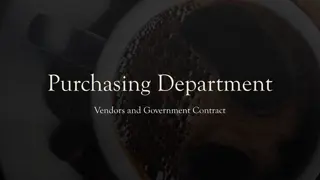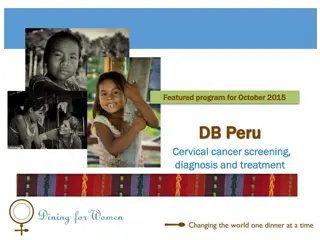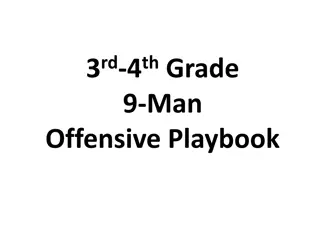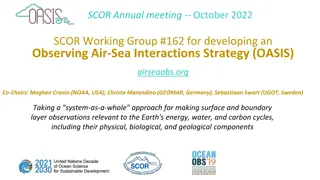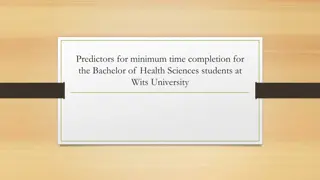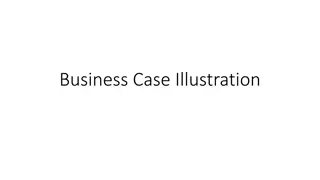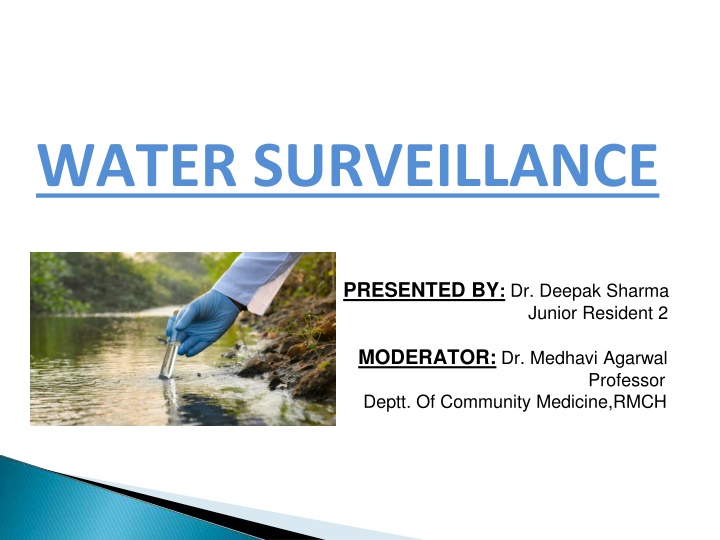
Water Surveillance for Public Health Safety
Explore the importance of water surveillance presented by Dr. Deepak Sharma and Dr. Medhavi Agarwal, focusing on continuous assessment of drinking water quality, quantity, accessibility, affordability, and safety measures at home. Learn about identifying and evaluating factors associated with health risks, direct assessment audit approaches, and approval processes for new water sources. Discover the significance of sanitary surveys, monitoring programs, and sampling techniques for ensuring the quality of drinking water.
Download Presentation

Please find below an Image/Link to download the presentation.
The content on the website is provided AS IS for your information and personal use only. It may not be sold, licensed, or shared on other websites without obtaining consent from the author. If you encounter any issues during the download, it is possible that the publisher has removed the file from their server.
You are allowed to download the files provided on this website for personal or commercial use, subject to the condition that they are used lawfully. All files are the property of their respective owners.
The content on the website is provided AS IS for your information and personal use only. It may not be sold, licensed, or shared on other websites without obtaining consent from the author.
E N D
Presentation Transcript
WATER SURVEILLANCE PRESENTED BY: Dr. Deepak Sharma Junior Resident 2 MODERATOR: Dr. Medhavi Agarwal Professor Deptt. Of Community Medicine,RMCH
Continuous and vigilant public health assessment and overview of the safety and acceptability of drinking-water supplies (WHO-1976) 2
?Quality ?Quantity ?Accessibility ?Affordability ?Continuity of drinking-water supplies 3
At home Source Safe source Ways to prevent 4
?Identify & evaluate factors associated with drinking water which could pose a health risk ?To take both preventive & remedial action ?For development of rational strategies for improvement of quality of water supply services ?To meet agreed national standards & institutional targets 5
Direct Assessment Audit approach Information regarding system performance Review records to ensure data is reliable. 6
Approval of new sources(Including private owned) Watershed protection Approval-construction & operating procedures of water works disinfection of the plant & distribution system periodic flushing programmes & cleaning of water storage facilities certification of operators regulation of chemical substances Cross-connection control ,back flow prevention ,leak detection control 7
Sanitary surveys Monitoring programmes Development of codes of practice for well construction ,pump installation and plumbing Inspection quality control in bottled water 8
Sanitary Survey Sampling Bacteriological Surveillance 1)Presumptive Coliform Test - Multiple Tube Method Membrane Filtration Technique 2)Detection Of Faecal Strep & Cl.Perfringes 3)Colony Count Biological Examination Chemical Surveillance 9
?A sanitary survey defined as an on-site inspection and evaluation by a qualified person of all the conditions, devices, and practices in the water supply system which pose a danger to the health and well being of the water consumer 10
?A new source is being contemplated ?Laboratory analysis indicates hazard to health ?An outbreak occurs ?To interpret bacteriological, chemical and physical analyses of samples ?When any change takes place that can affect the water system, e.g. industries coming up in watershed and ?On a regular basis 11
?Ensure no external contamination ?Asepsis Glass bottles with securely fitting stoppers or caps with non toxic liners. ?Sample for general analysis= 2 litres(non-acidified) ?Bacteriological analysis=250 ml (sterilized bottle) ?Metals analysis=1000 ml (acidified sample) 12
?Water from a tap in a distribution system ?Water from watercourse (river, lake,well etc) 14
?Date ?Time of collection ?Despatch ?Source ?Rainfall ?Findings 18
?Take the positive tube from the presumptive test ?Incubate one plate at 37 C for 24 hours and another at 44.5 C for 24 hours. ?Look for typical colonies in the media ; blue black with green metallic sheen colonies are of E. coli 19
?Lactose Tegritol agar ?Membrane lauryl sulfate lactose 20
?Nutrient agar at 37 deg C and 22 deg C ?An estimate of the general bacterial purity of water. ?Same source at frequent intervals may be of considerable value. ?A sudden increase in the colony count may give the earliest indication of contamination. 21
Water at the point of consumption Plate count after 2 days at 37 deg C Plate count after 3 days at 22 deg ?The recomme nded plate counts are ( i ) Disinfected 0 20 (ii) Not - disinfected 10 100 22
The National Water Supply & Sanitation Programme was initiated objective of providing safe water supply and adequate drainage facilities for the entire urban and rural population of the country. In 1972 a special Acceelerated Rural Water Supply Supply Programme was started as a supplement to the above mentioned programme. Renamed as Rajiv Gandhi National Drinking Water Mission in 1991. in 1954 with the programme known as the 23
Swajaldhara Programme was launched on 25thDecember 2002. Bharat Nirman Programme was launched in 2005, priority was given to cover water quality problem. Jal Jeevan Mission launched on 15/Aug/2019.

